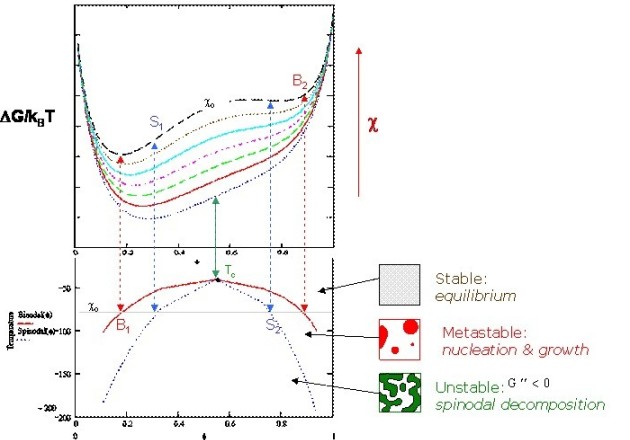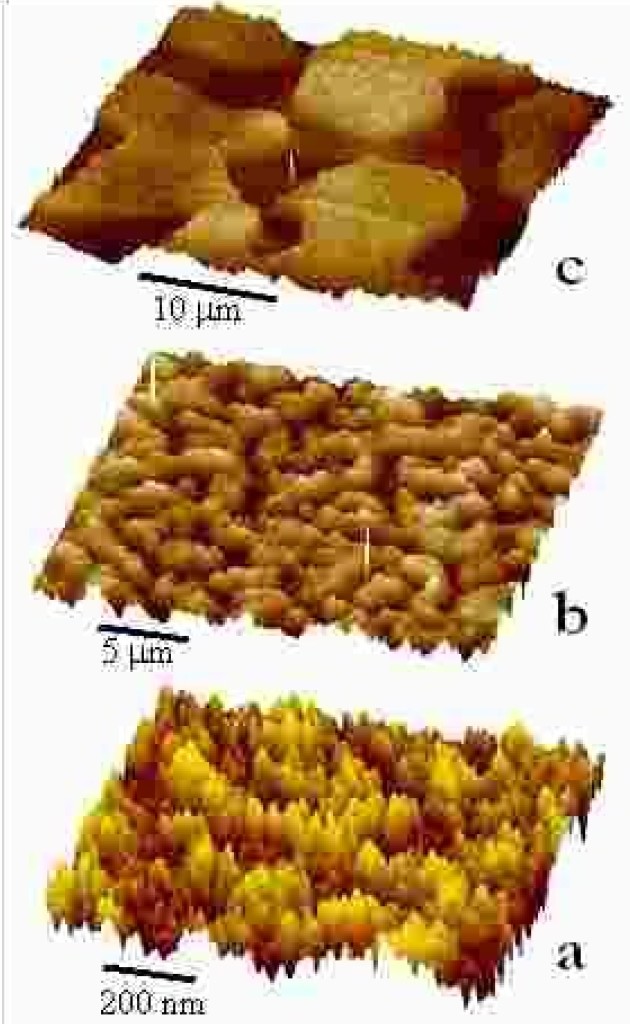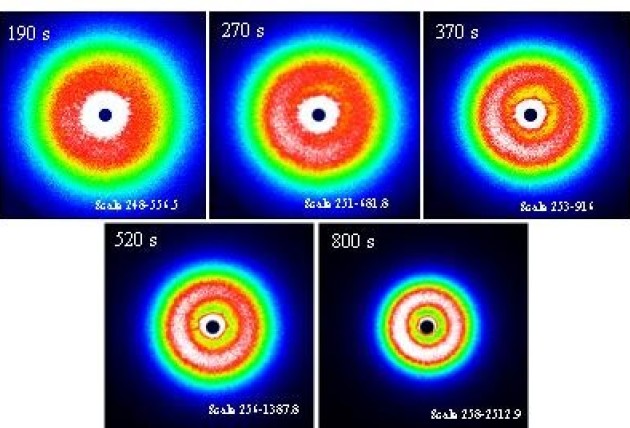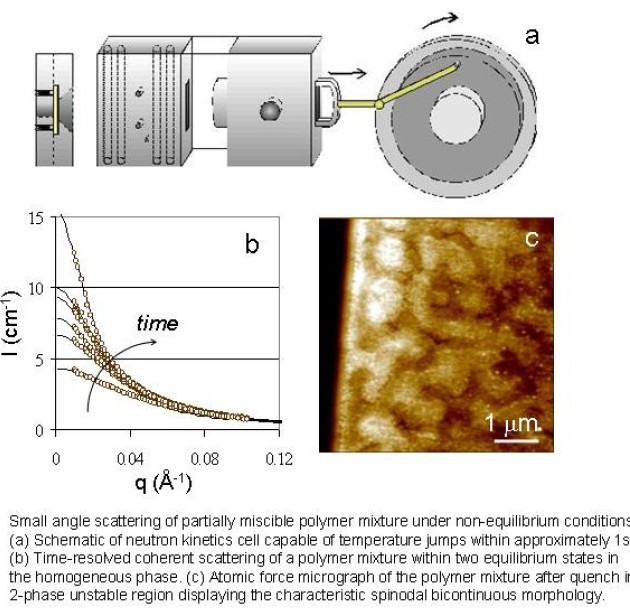Polymer Blends
Polymer Blends
Thermal (or pressure) induced demixing of partially miscible binary polymer mixtures is a simple and controlled approach to inducing well-defined polymeric structures. By understanding the role of polymer architecture (tacticity, chain length and polydispersity) on the blend thermodynamics, the demixing pathway can be chosen to yield nanostructured materials with precise control of length scale and connectivity with application in membranes, scaffolds and photovoltaics. We probe the thermodynamics and morphological evolution of polymer blend films with small-angle neutron scattering (SANS), light scattering and optical microscopy and compare our experimental results to existing theoretical descriptions of polymer blend thermodynamics and demixing kinetics.
Polymer Thermodynamics
Phase diagramme of an UCST polymer blend predcited by Flory-Huggins theory

Phase separation of polymer mixtures
AFM topography of phase separated TMPC/PS blends

2D scattering images of spinodal decomposition of polymer mixture

Small angle scattering of partially miscible polymer mixture under non-equilibrium conditions

References
3. Aoki, Y. Wang, H., Sharratt, W., Dalgliesh, R. M., Higgins, J. S., Cabral, J. T. (2019), Small Angle Neutron Scattering Study of the Thermodynamics of Highly Interacting PαMSAN/dPMMA Blends. Macromolecules, 52 (3), 1112-1124.
2. Cabral, J. T. and Higgins, J. S. (2018), Spinodal nanostructures in polymer blends: On the validity of the Cahn-Hilliard length scale prediction. Progress in Polymer Science, 81, 1-21.
1. Cabral, J. T. (2002), Polymer Blends: Equilibrium, Dynamics and Phase Separation, PhD Thesis, Imperial College London


